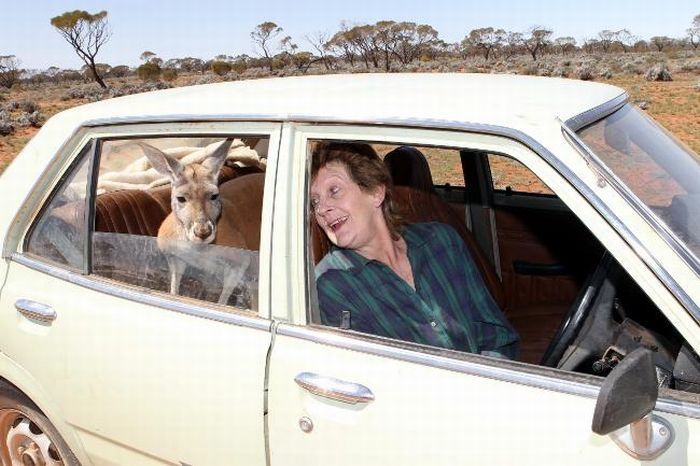|
|
Beemer, Pet Kangaroo
|
The middle to late bulungmayines, Gungaroo and Wanburoo lacked digit 1 of the hind foot and digits 2 and 3 were reduced and partly under the large digit 4, much like the modern kangaroo foot. This would indicate that they were bipedal. In addition their ankle bones had an articulation that would have prohibited much lateral movements, an adaptation for bipedal hopping. Species related to the modern grey kangaroos and wallaroos begin to appear in the Pliocene. The red kangaroo appears to be the most recently evolved kangaroo with its fossil record not going back beyond the Pleistocene period, 1–2 mya.
Europeans have long regarded kangaroos as strange animals. Early explorers described them as creatures that had heads like deer (without antlers), stood upright like men, and hopped like frogs. Combined with the two-headed appearance of a mother kangaroo, this led many back home to dismiss them as travellers' tales for quite some time. The first kangaroo to be exhibited in the western world was an example shot by John Gore, an officer on Captain Cook's Endeavour in 1770. The animal was shot and its skin and skull transported back to England whereupon it was stuffed (by taxidermists who had never seen the animal before) and displayed to the general public as a curiosity. The first glimpse of a kangaroo for many 18th-century Britons was a painting by George Stubbs.
• Kangaroos compared with wallabies
Kangaroos and wallabies belong to the same taxonomic family (Macropodidae) and often the same genera, but kangaroos are specifically categorised into the six largest species of the family. The term wallaby is an informal designation generally used for any macropod that is smaller than a kangaroo or wallaroo that has not been designated otherwise.
|
|









